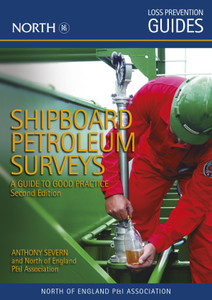
This comprehensive guide to the vetting process outlines the reasons that tankers are vetted, the components of vetting, vetting operations and the impact of vetting on the chartering business. It assists personnel in improving the safety of tanker operations and helps raise industry standards.
The level of understanding of the vetting process among the many tanker operators has varied considerably. It is therefore not surprising that difficulties in understanding and managing the vetting interface exist among both parties. This guide seeks to clarify vetting issues and explain the processes used, with the objective of helping all concerned to work together more effectively and, of course, in the process to improve the safety of tanker.
It explains:
- the reasons that tankers are vetted
- the components of vetting
- the vetting process
- the impact of vetting on the chartering business.
There is a feeling among many people who manage tanker operations that vetting of their operation by the oil major charterers is unnecessary. They consider that people employed in oil major vetting departments have little understanding of the problems and challenges that face tanker operators in their daily work and that this lack of understanding leads to an unrealistic evaluation of their company’s performance and therefore an ‘unfair’ evaluation of their operation when it comes to the vetting process. This is largely, but not totally, a misconception as most of those involved in vetting have served on tankers and many have also taken part in managing tanker operations.
Conversely, those involved in the tanker vetting process have a view that tanker operators do not understand the vetting activity, will not respond to the requirements of vetting organisations and consequently make business life more difficult for all concerned. There may indeed be some truth in this, but life as an operator of tankers is difficult, the work is hard, the hours long and successfully managing the interface with the different vetting organisations is not a simple process.
In practice, the vetting processes have in the past varied considerably among the OCIMF members and the level of understanding of the vetting process among the many tanker operators has also varied considerably. It is therefore not surprising that difficulties in understanding and managing the vetting interface exist among both parties.
This guide seeks to clarify the vetting issues and explain the processes used with the objective of helping all concerned to work together more effectively and, of course, in the process to improve the safety of tanker operations and raise industry standards.
This guide came about when I was recently asked by a Fleet Manager to recommend some literature on vetting so that he could better understand the general principles. I realised that, though there are many good publications on specific aspects of the vetting process, such as the recently updated TMSA booklet, the SIRE publications by OCIMF and the INTERTANKO ‘Guide to the Vetting Process’, there is no single publication that explains the overall function and gives details of its component parts.
This guide is therefore intended to fill that gap and to provide information that will enable the tanker operators and vetting organisations to better understand the issues involved in tanker vetting. Achieving this must surely be in their joint interests and those of the industry as a whole.
I am indebted to the many individuals and organisations who, over the years, have given me direction in the subject, contributed their experience and knowledge and given legal, practical and anecdotal information. This guide is a representation of the industry development of tanker vetting and, as such, is a distillation of the above.
1.
Background
and
Introduction
2
Who
manages
the
vetting
process?
Charterer
or
Operator?
3.
The
commercial
impact
of
Tanker
Vetting
4.
The
Tanker
Vetting
Process
5.
The
components
of
the
vetting
process
6
Meetings
between
the
operator
and
the
Vetting
Company
7
General
Communications
between
the
Operator
and
the
Vetting
Company.
8.
Vetting
Terminology
9.
The
Future
of
Vetting
References
Glossary
Tim Knowles spent most of his career with Esso Petroleum and moved to the Exxon tanker vetting department and took over as Manager in 1996. He took part in the development of the tanker vetting process within ExxonMobil, chaired the OCIMF SIRE development group and assisted in the development of the Tanker Management Self Assessment (TMSA) process within ExxonMobil before its adoption and further development by OCIMF.
?
After 10 years managing the Third Party Vetting process for ExxonMobil, Tim retired to become an advisor to the tanker industry on vetting related issues.
- Number of Pages:
- 62
- ISBN:
- 9781905331932
- Published Date:
- January 2010
- Binding Format:
- Paperback
- Book Height:
- 210 mm
- Book Width:
- 140 mm
- Weight:
- 0.3 kg
- Preview:
- Yes
- Author:
- Tim Knowles
 Witherbys.com
Witherbys.com




